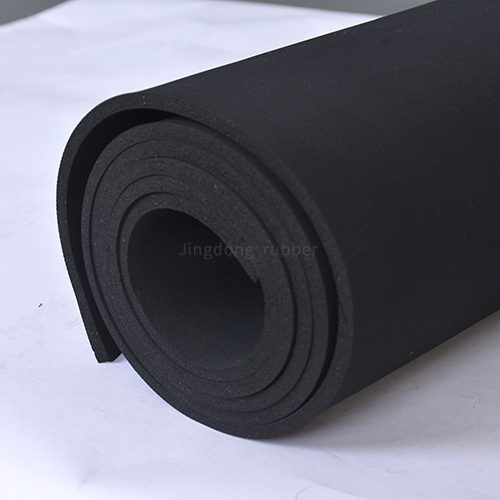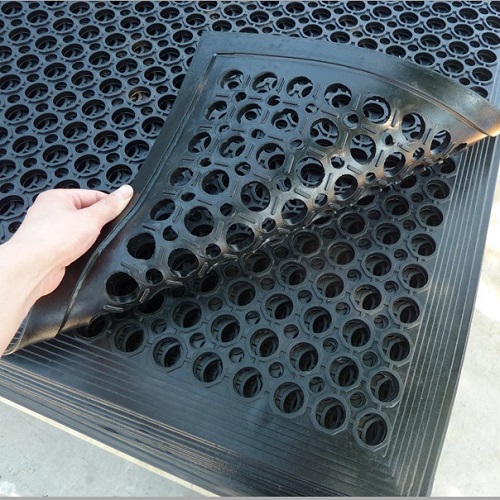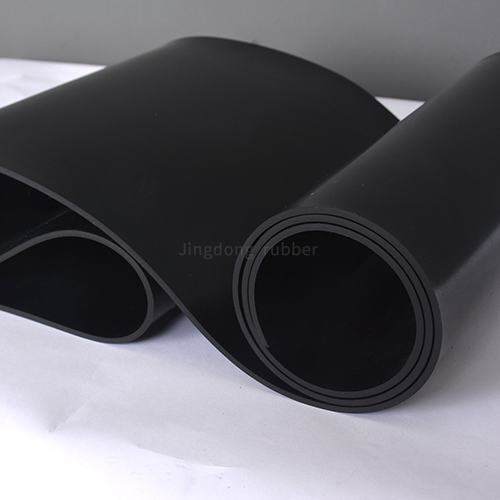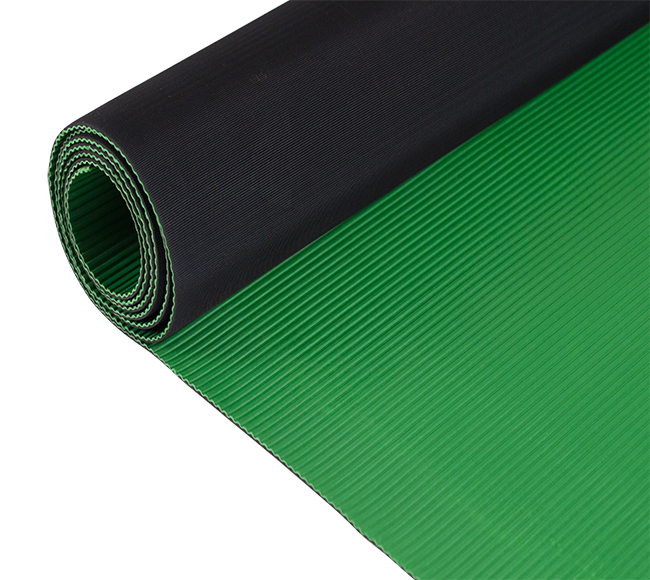Cloth Inserted Silicone Rubber Sheet
What is a Cloth Inserted Silicone Rubber Sheet?
A Cloth Inserted Silicone Rubber Sheet is a specialized composite material engineered for demanding industrial applications. It consists of a high-performance silicone rubber layer that is permanently bonded, typically through a vulcanization process, to one or more layers of a fabric reinforcement, most commonly fiberglass cloth. This combination creates a material that harnesses the excellent flexibility, wide temperature resistance, and sealing properties of silicone with the superior tensile strength, tear resistance, and dimensional stability of the fabric insert. The result is a durable, versatile sheet that performs reliably under pressure, extreme temperatures, and in harsh environmental conditions where standard rubber sheets would fail.
Key Features and Benefits
The unique construction of cloth inserted silicone sheets offers a distinct set of advantages that make them indispensable in many sectors.
- Enhanced Mechanical Strength: The fabric layer dramatically increases the tensile and tear strength, preventing the sheet from stretching, deforming, or ripping under load.
- Excellent Temperature Resilience: Silicone rubber provides a consistent performance across a vast temperature range, typically from -60°C to 230°C (-76°F to 446°F), making it suitable for both cryogenic and high-heat environments.
- Superior Sealing and Gasketing: The silicone surface conforms well to uneven flanges, creating an effective seal against dust, moisture, air, and many fluids. The fabric insert ensures the gasket does not extrude under high bolt loads.
- Outstanding Durability: Resistant to weathering, ozone, UV radiation, and aging, ensuring a long service life even when exposed to the elements.
- Good Chemical Resistance: Withstands exposure to many chemicals, oils, and solvents, though compatibility should always be verified for specific applications.
- Flexibility and Conformability: Despite the reinforcement, the sheet remains flexible enough to be fabricated into complex gaskets and seals.
Technical Specifications and Parameters
To ensure you select the correct material for your project, here are the detailed technical parameters for our standard cloth inserted silicone rubber sheet.
Material Composition
| Component | Description | Standard Material |
|---|---|---|
| Silicone Rubber Layer | The elastomeric compound providing sealing and environmental resistance. | High-Temperature, Cured Silicone |
| Fabric Insert | The reinforcing layer providing mechanical strength. | Fiberglass Cloth (Various Weights) |
| Bonding Method | The process used to fuse the layers. | Heat Vulcanization |
Physical & Mechanical Properties
| Property | Test Method | Standard Value | Units |
|---|---|---|---|
| Hardness (Shore A) | ASTM D2240 | 50 - 80 | Shore A |
| Tensile Strength (min) | ASTM D412 | 6.0 | MPa |
| Elongation at Break (min) | ASTM D412 | 250 | % |
| Tear Strength (Die C) | ASTM D624 | 20 | kN/m |
| Specific Gravity | ASTM D297 | 1.40 - 1.60 | - |
Temperature & Environmental Resistance
| Property | Details | Performance Rating |
|---|---|---|
| Continuous Service Temperature | Long-term exposure range | -60°C to +230°C (-76°F to +446°F) |
| Intermittent Service Temperature | Short-term peak exposure | Up to 260°C (500°F) |
| Weather & Ozone Resistance | Outdoor exposure | Excellent |
| UV Resistance | Sunlight exposure | Excellent |
| Flame Resistance | Self-extinguishing properties | UL 94 HB |
Standard Available Forms
- Sheet Thickness: 0.8mm, 1.0mm, 1.5mm, 2.0mm, 3.0mm (Custom thicknesses available)
- Standard Sheet Size: 1m x 1m, 1.2m x 1.2m, 1m x 2m, 1.2m x 10m (Rolls)
- Fabric Insert Options: Single-side cloth insertion, Double-side cloth insertion
- Color: Red (Standard), White, Black, Gray (Custom colors available)
Common Applications
This material's robustness makes it a go-to solution across various industries.
- Automotive & Aerospace: Engine bay gaskets, intake manifold seals, thermal insulation blankets, firewall seals.
- Industrial Machinery: High-pressure gaskets for pumps, compressors, and hydraulic systems; conveyor belt seals; diaphragm materials.
- HVAC & Appliance: Oven and furnace door gaskets, industrial dryer seals, heat exchanger gaskets.
- Electrical Enclosures: Gaskets for electrical cabinets requiring EMI/RFI shielding (when combined with conductive filler) and environmental sealing.
- Food Processing: Conveyor belts and seals in equipment requiring FDA-compliant materials (specific grades available).
Frequently Asked Questions (FAQ)
What is the primary advantage of using a cloth inserted silicone rubber sheet over a plain silicone sheet?
The primary advantage is the significant increase in mechanical strength. The fabric insert, usually fiberglass, provides high tensile and tear resistance, preventing the sheet from stretching, splitting, or extruding under high bolt pressure or mechanical stress. A plain silicone sheet is more flexible but can tear easily and lacks the dimensional stability, making the cloth-inserted version far superior for gasketing in high-pressure applications.
Can cloth inserted silicone rubber sheets be used for outdoor applications?
Yes, they are exceptionally well-suited for outdoor use. The silicone rubber component is inherently resistant to degradation from ozone, UV radiation from sunlight, and wide temperature fluctuations. This combination ensures the material does not become brittle, crack, or lose its sealing properties over time when exposed to the elements, making it ideal for outdoor electrical enclosures, automotive seals, and construction applications.
What is the maximum continuous operating temperature for this material?
Our standard cloth inserted silicone rubber sheet is rated for continuous service at temperatures up to 230°C (446°F). For short-term or intermittent exposure, it can withstand peaks up to 260°C (500°F) without significant degradation of its key properties. It also performs reliably at cryogenic temperatures as low as -60°C (-76°F).
How do I cut and fabricate a cloth inserted silicone rubber sheet into a gasket?
This material can be die-cut, kiss-cut, or hand-cut with sharp utility knives or scissors for prototypes. For production runs, steel rule die cutting or CNC laser cutting is recommended for precision and efficiency. It can also be punched. When cutting, ensure blades are sharp to achieve a clean edge without fraying the fabric layer. The material is not designed for thermoforming.
Is this material resistant to oils and fuels?
Silicone rubber generally has fair resistance to many oils and fuels, but its performance is highly dependent on the specific fluid, temperature, and duration of exposure. It can swell or degrade in the presence of certain petroleum-based oils, gasoline, and brake fluids. For applications involving constant contact with aggressive hydrocarbons, it is crucial to conduct compatibility tests or consult the manufacturer's chemical resistance chart for the specific compound.
Can I get this material in a roll form?
Yes, cloth inserted silicone rubber sheet is commonly supplied in rolls for applications requiring long, continuous lengths, such as conveyor belt covers or roll-up door seals. Standard roll widths are typically 1 meter or 1.2 meters, with roll lengths of 10 meters or more, depending on the thickness. Custom roll sizes can often be accommodated.
What is the difference between single-side and double-side cloth insertion?
Single-side cloth insertion means the fabric layer is bonded to one side of the silicone sheet. This is often used when one side needs to seal against a surface while the other, rubber-only side, needs to be more flexible or have a higher coefficient of friction. Double-side cloth insertion has fabric layers on both sides, encasing the silicone core. This provides maximum tensile strength and dimensional stability and is often used in high-pressure gaskets and diaphragms where extrusion resistance is critical on both sides.
Is this material FDA compliant for food contact?
Standard grades of cloth inserted silicone rubber are not necessarily FDA compliant. However, we offer special formulations that are designed to meet FDA CFR 21.177.2600 standards for repeated food contact. If your application is in the food, beverage, or pharmaceutical industry, you must specify that you require an FDA-compliant grade.
How do I clean a cloth inserted silicone rubber gasket?
For general cleaning, use a soft cloth or sponge with a mild soap and water solution. For removing more stubborn contaminants like grease or adhesive residue, isopropyl alcohol is usually effective. Avoid using strong solvents, abrasive cleaners, or sharp tools that could damage the silicone surface or the fabric layer. Always ensure the gasket is completely dry before re-installation.
What is the shelf life of this material?
When stored correctly in its original packaging in a cool, dry, and dark environment away from direct sunlight, ozone sources (like electric motors), and extreme temperatures, a cloth inserted silicone rubber sheet has a shelf life of typically 10 years or more without significant degradation of its physical properties. It is always good practice to inspect the material for any signs of hardening or surface cracking before use if it has been stored for an extended period.
- View as






